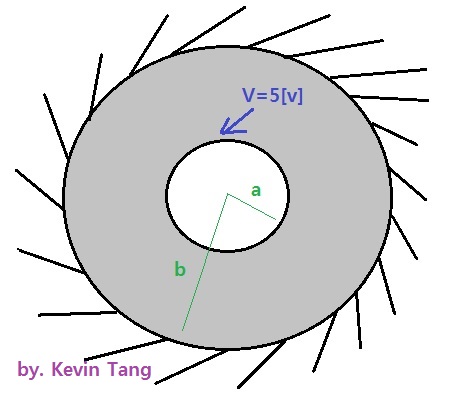
Field Theory - Online Tutorial 3
by Kevin Tang , last update: Jul 1st, 2014
Given a spherical capacitor that have a inner and outer radius a [m] and b [m].
Where voltage will be following... V(r=a) = 5 [V], V(r=b) = 0[V] as shown in Figure #1. Given ε = εo and conductivity constant = σ
Find the following...
1a) Write down Laplace's Equation
1b) V (a < r < b)
1c) E
1d) ρsa when r = a
1e) Q when r= a
1f) C at r =a
1g) Energy Density
1h) Total Energy
1i) G conductivity, when r = a, given conductivity constant = σ

Figure # 1
1a) Write down Laplace's Equation
Solving Time : 10 sec
If you are not sure which one is Laplace's Equation, please review it right now~
| A | B | C | D |
.
.
.
.
.
.
.
SOLUTION 1a)
Yes, very simple ... its ∇2V = 0
Notice, Laplace's equation is from the Poisson's equation, its a "special case" of Poisson equation, where as following...
∇2V = − ρv/ ε .... Poisson's equation
when you are in charge-free region, which ρv = 0
so it became.. ∇2V = 0
1b) Find V (a<r<b)
Solving Time: 10 min ... lets give a try :D
V (a < r < b) = ? which one?
|
A |
B |
C |
SOLUTION 1b)
Here is how you solve it, please actually go over it at least "once" by yourself.
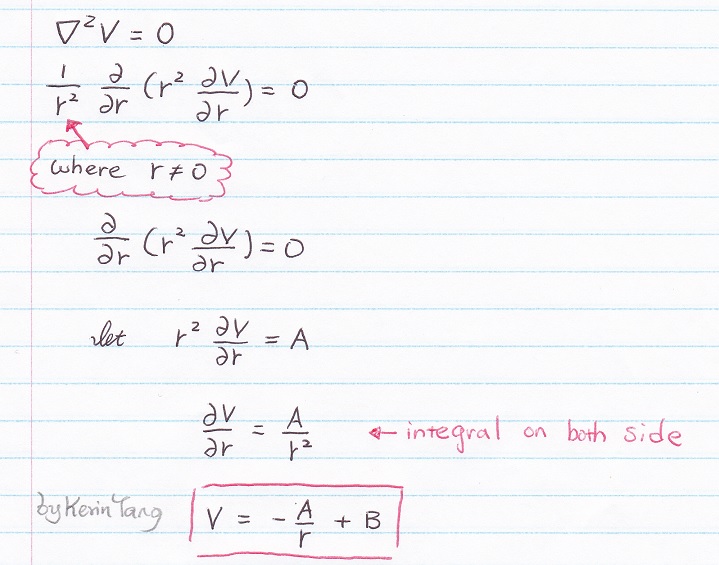
(Please don't forget the condition, that r CANNOT equal to zero)
Next, our target is to find A and B, 2 unknown so you need at least 2 equations,
sub the voltage value, V(r=a) = 5 and V(r= b) = 0 to make 2 equations.
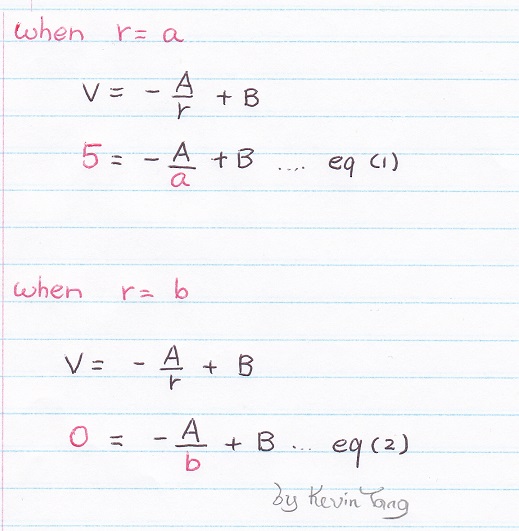
Now, let's find out A = ? and B = ?
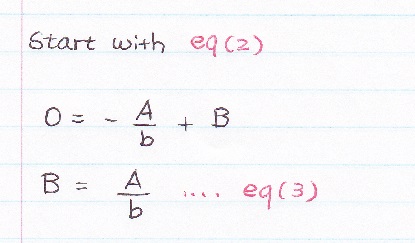
...
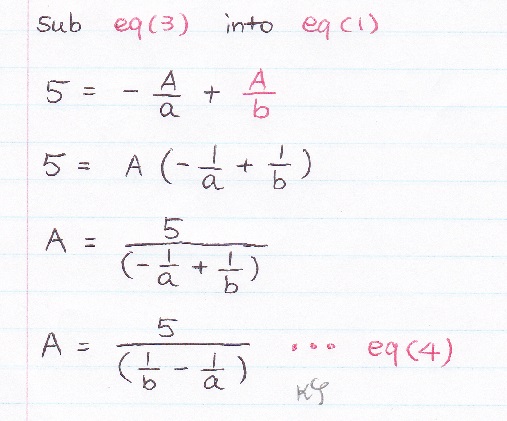
Almost finished...
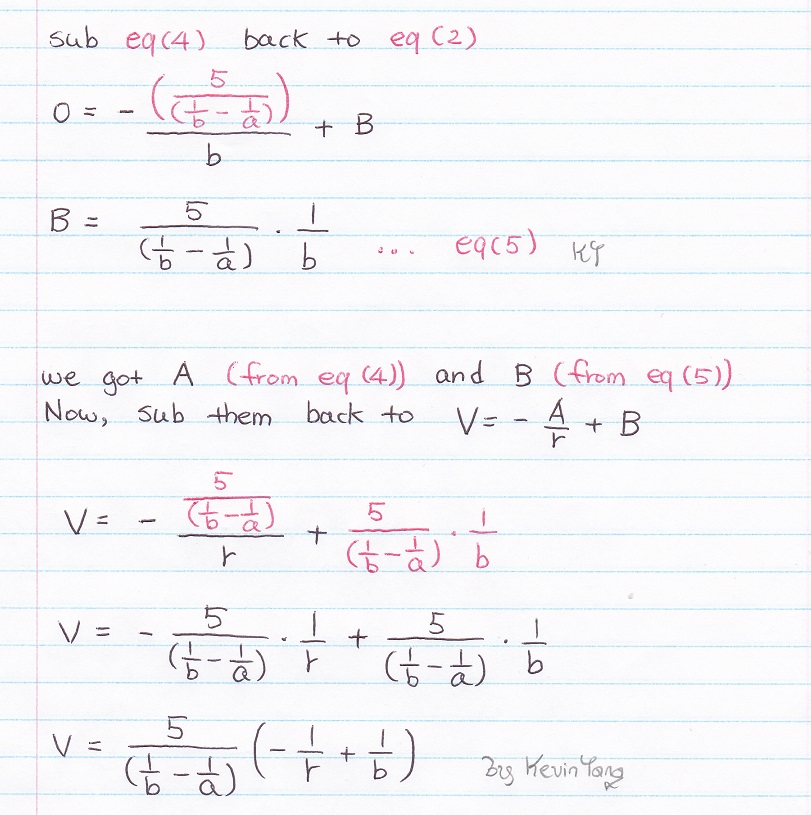
The answer for V(a<r<b)

....
1c) Find E
Maximum solving time: 5 min
|
A |
B |
C |
SOLUTION 1c)
Simply E = − ∇V
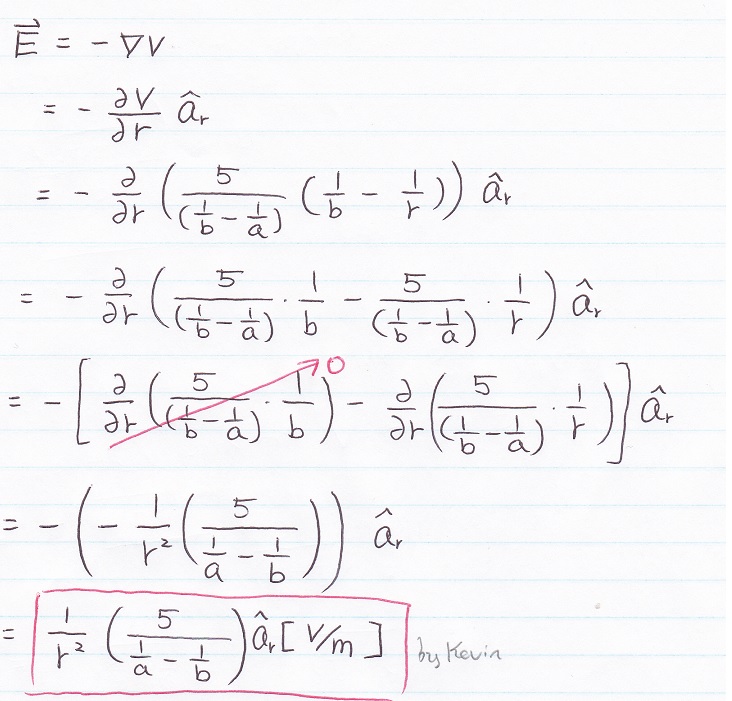
1d) Find ρsa at r = a (where ε = εo)
Suggest Solving Time: 5 min
|
A |
B |
C |
.
.
.
.
.
.
SOLUTION 1d)
* If you choice A ... ρsa is a scalar not a vector.
* If you choice B ... don't forget to sub r = a at the end.
* If you choice C ... you are cool :D
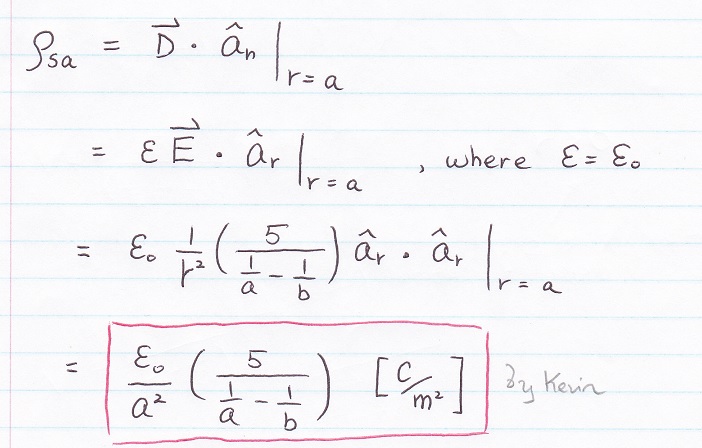
1e) Find Q when r= a
Suggest Solving Time: 2 min
SOLUTION 1e)
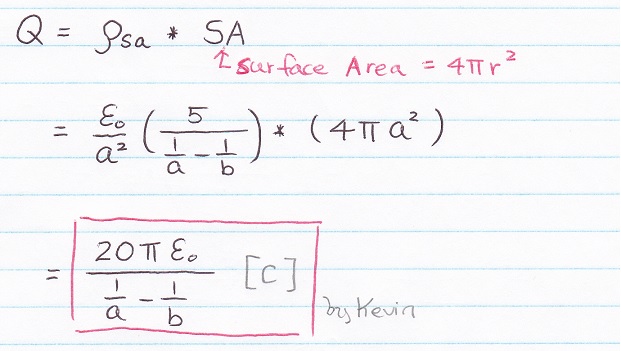
1f) Find C when r = a
Suggest Solving Time: 1 min
SOLUTION 1f)
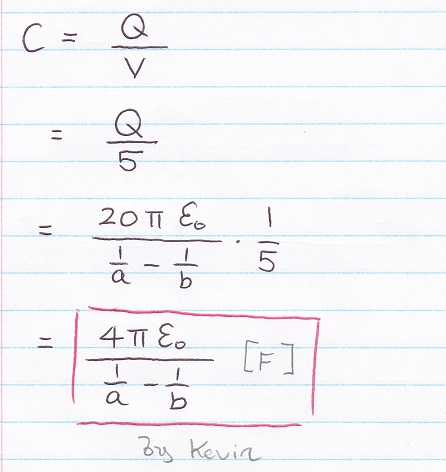
1g) Find Energy Density
Suggest Solving Time: 2 min
SOLUTION 1g)
The symbol of energy density is small case we
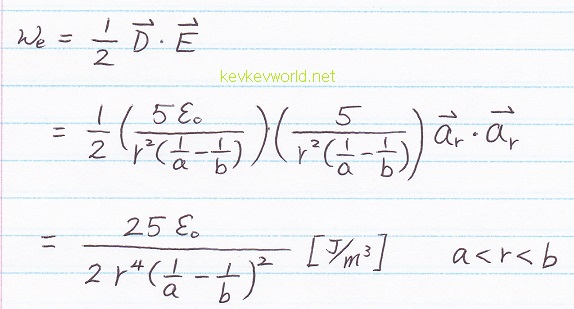
1h) Find Total Energy
Suggest Solving Time: 3 min
SOLUTION 1h)
The symbol of Total Energy is capital case We
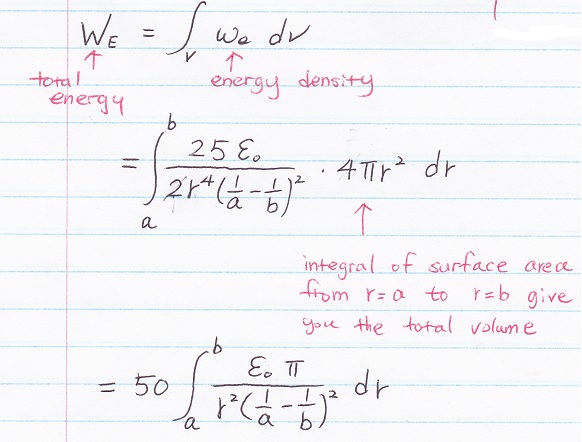
* Note: The integral of surface area respect to the change of radius, can lead you directly to the volume, no need to perform triple integral here.
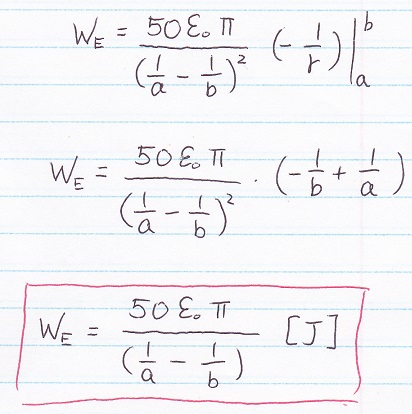
1i) G conductivity, when r = a, given conductivity constant = σ
Suggest Solving Time: 3 min
SOLUTION 1i)
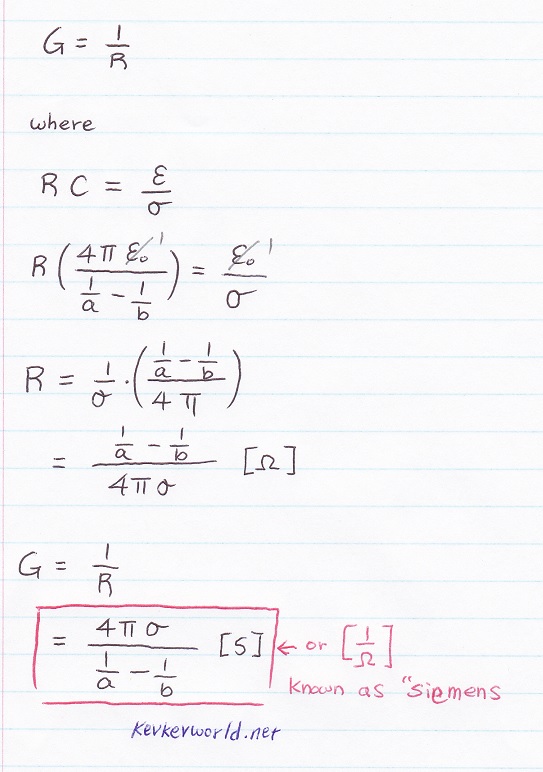
Q2
An infinitely long transmission line consisting of two concentric cylinders having their axes along z-axis. The inner conductor has radius "a"
and carrying current I, while the outer conductor has inner radius b and thickness t and carries return current - I.
Find the following...
a) Draw the diagram (show the detail label)
b) Find the magnetic field strength H everywhere
c) Find the magnetic flux B everywhere
d) Find the self inductance of inner conductor
SOLUTION a)
| A | B |
If you choice A, you got it wrong, as it said the inner conductor has radius of "a", the current is running inside it, so the i = +I will be inside "a"
If you choice B, you are cool~ :D
b) Find the magnetic field strength H everywhere
SOLUTION b)
First you should able to see there are "4" regions.
Region 1 : 0 < ρ < a
Region 2 : a < ρ < b
Region 3 : b < ρ < b + t
Region 4 : b+ t < ρ
Remember, left side stay the same, only the right hand side is chaging
For Region 1
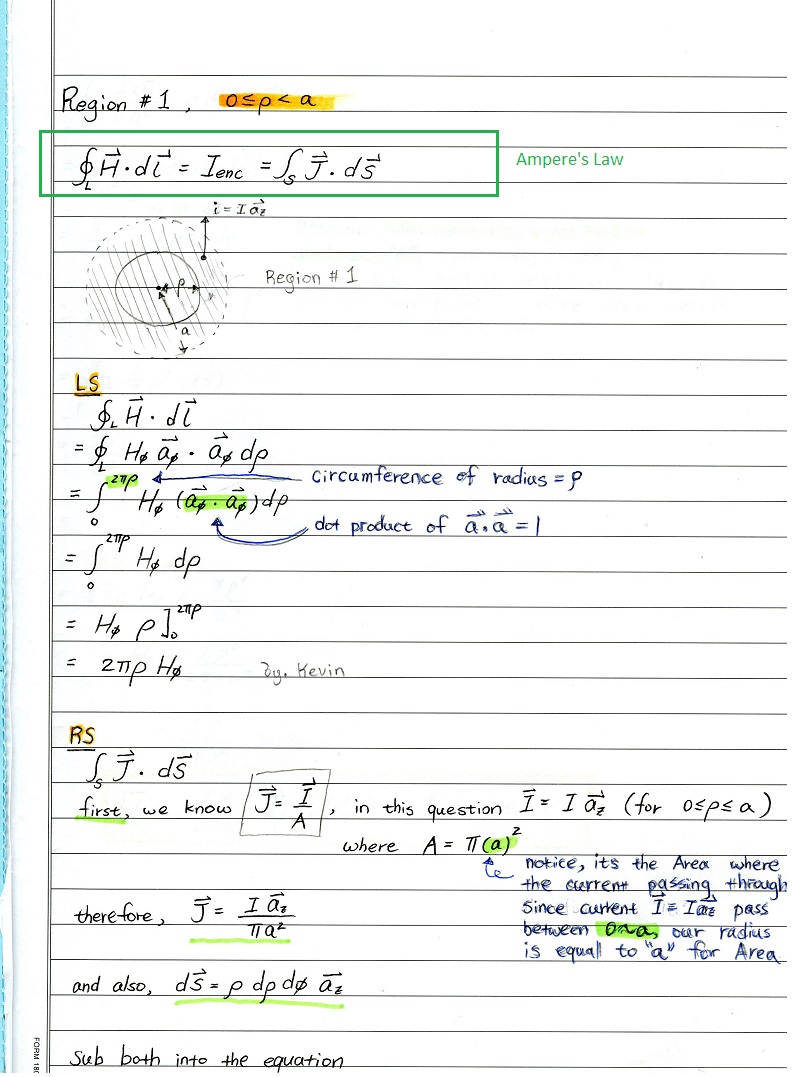
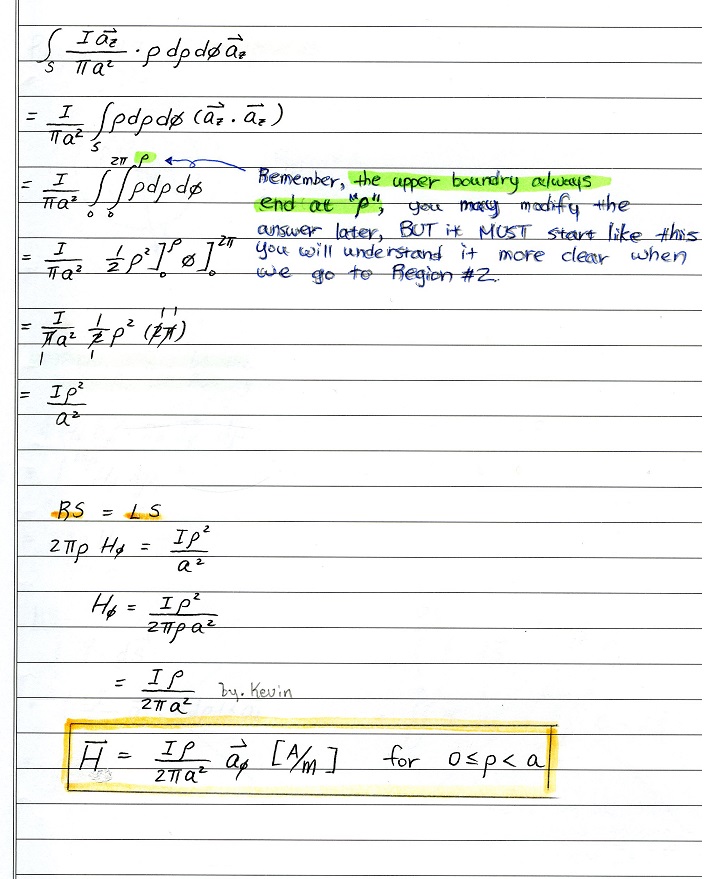
For Region 2
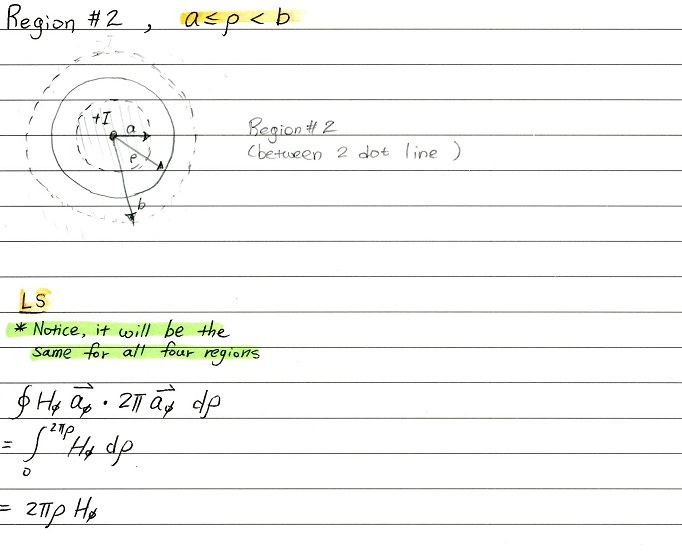
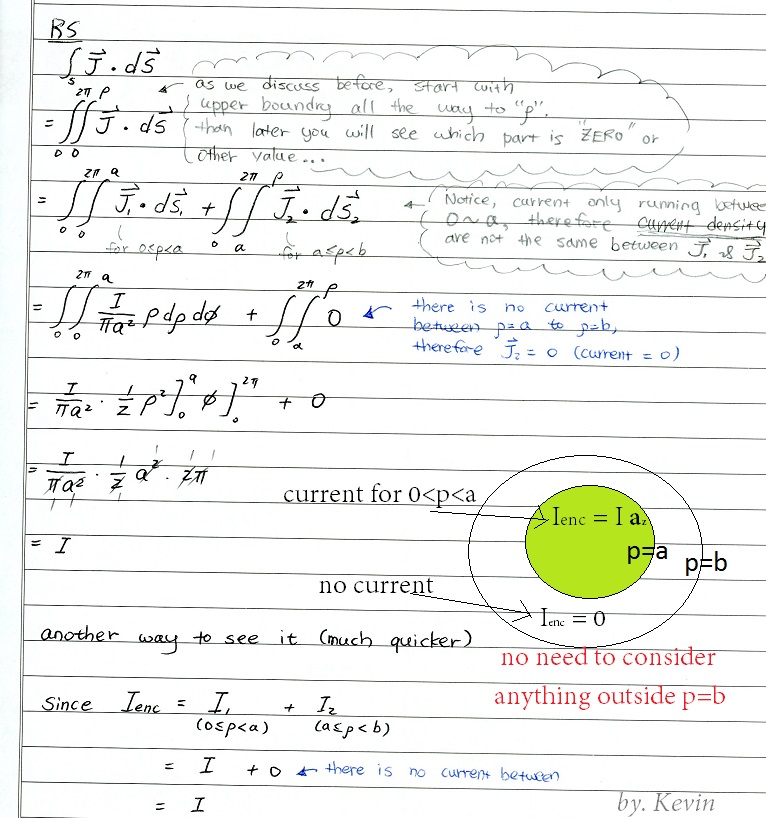
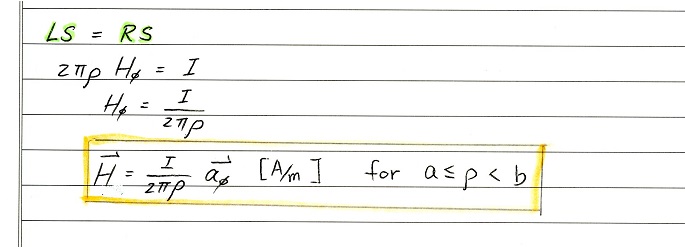
For Region 3
Notice, the LS side is still the same (line integral part)
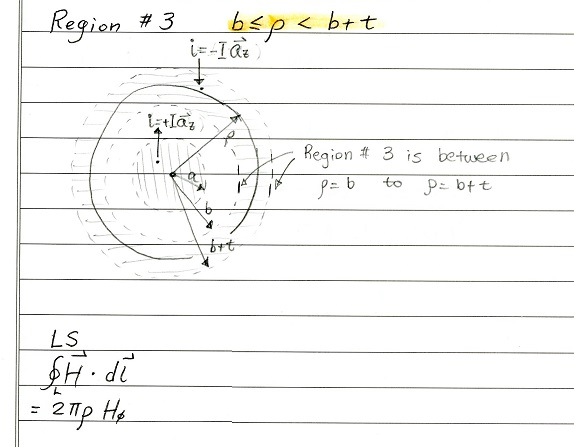
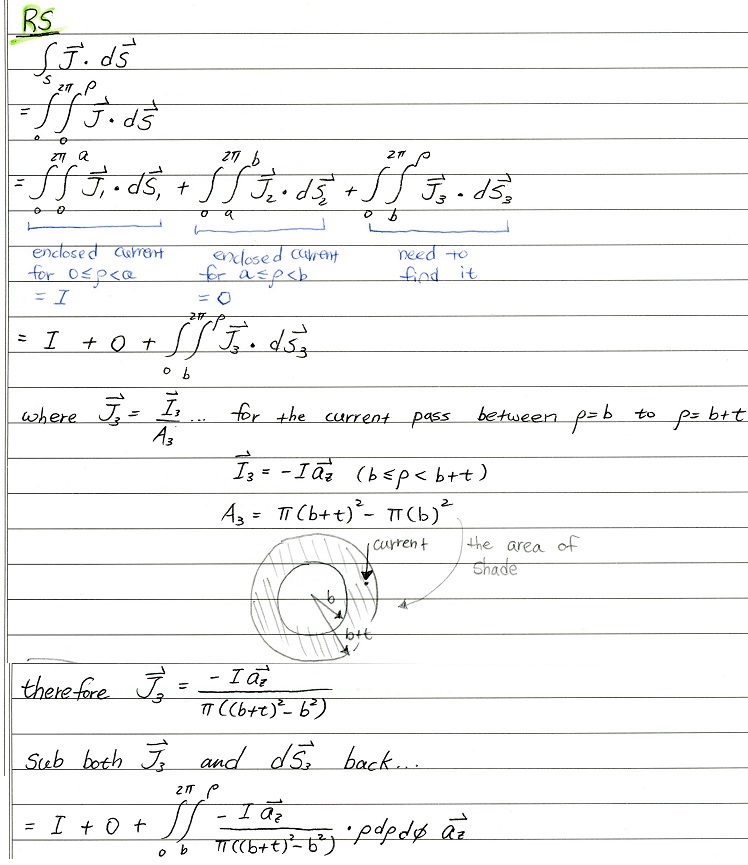
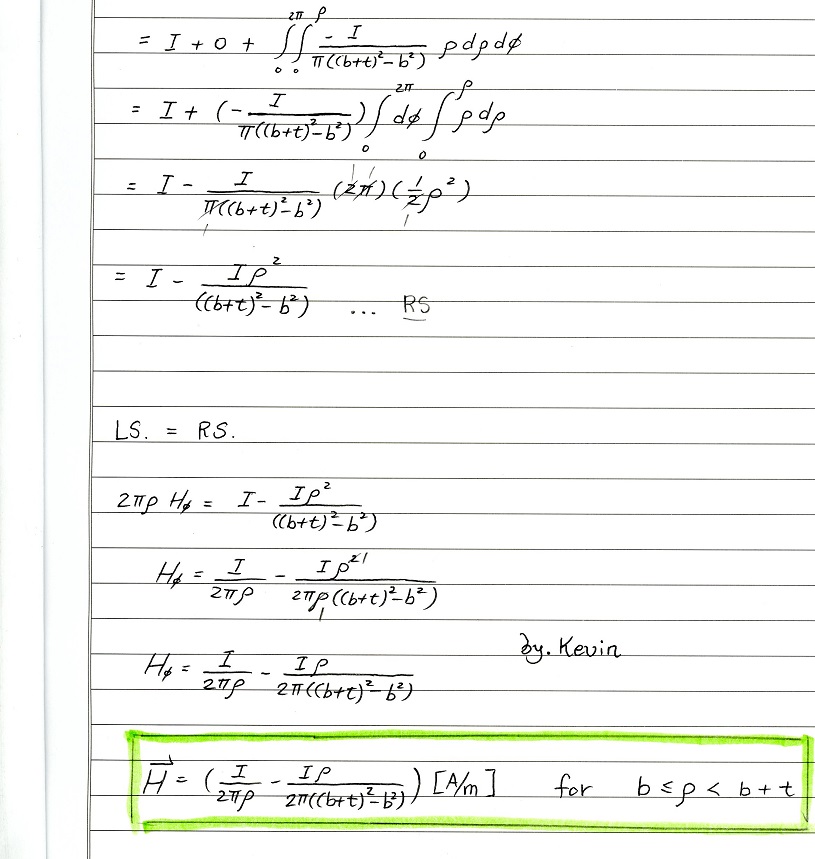
For Region 4
H = 0 [A/m].... why?
Due to the the total enclosed current equal to zero when you are outside b+t, as I + (-I) = 0
c) Find
d) Self Inductance
Last note:
Good luck, its my very pleasure to work with all of you :)
You may leave me any message if you have any questions, I will try to answer ASAP, thanks and good luck :)